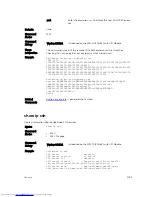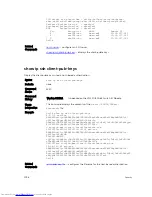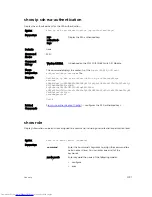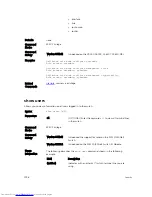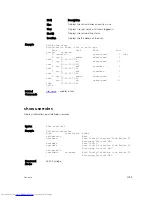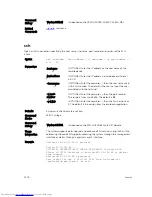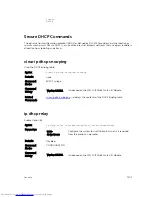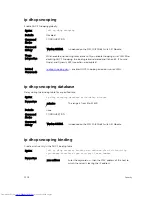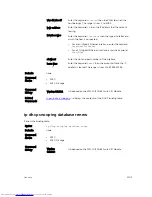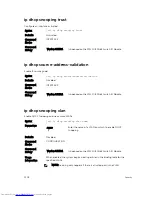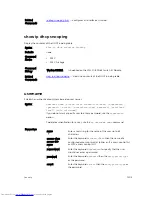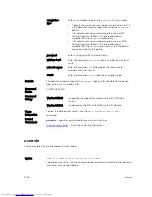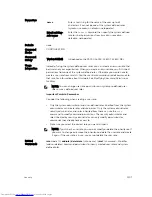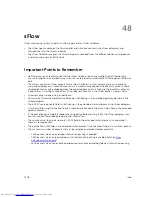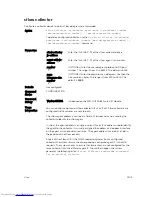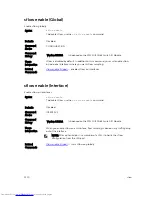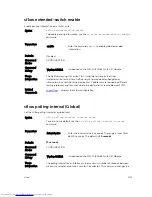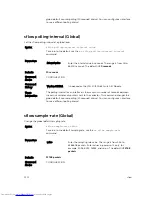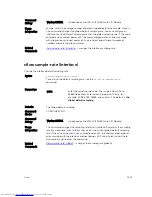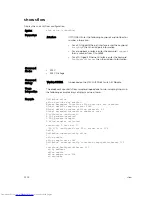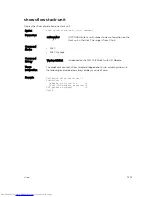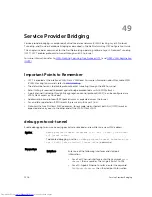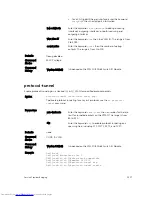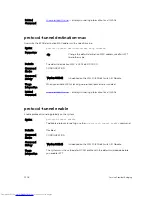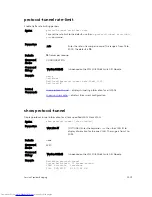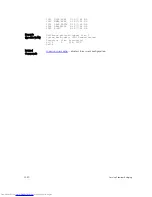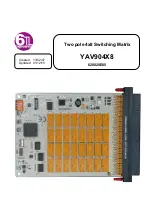
sflow collector
Configure a collector device to which sFlow datagrams are forwarded.
Syntax
sflow collector {
ip-address
} agent-addr {
ip-address
} [
number
[max-datagram-size
number
]] | [max-datagram-size
number
]
To delete a configured collector, use the
no sflow collector {
ip-address
}
agent-addr {
ipv4-address
} [
number
[max-datagram-size
number
]] |
[max-datagram-size
number
]
command.
Parameters
sflow collector
ip-address
Enter the IPv4 (A.B.C.D) of the sFlow collector device.
agent-addr
ip-
address
Enter the IPv4 (A.B.C.D) of the sFlow agent in the router.
number
(OPTIONAL) Enter the user datagram protocol (UDP) port
number. The range is from 0 to 65535. The default is 6343.
max-
datagram-size
number
(OPTIONAL) Enter the keyword max-datagram-size then the
size number in bytes. The range is from 400 to 1500. The
default is
1400
.
Defaults
Not configured.
Command
Modes
CONFIGURATION
Command
History
Version 8.3.16.1
Introduced on the MXL 10/40GbE Switch IO Module.
Usage
Information
You can configure up to two sFlow collectors (IPv4 or IPv6). If two collectors are
configured, traffic samples are sent to both.
The sFlow agent address is carried in a field in SFlow packets and is used by the
collector to identify the sFlow agent.
In sFlow, the agent address is a single invariant IPv4 or IPv6 address used to identify
the agent to the collector. It is usually assigned the address of a loopback interface
on the agent, which provides invariance. The agent address is carried as a field in
the payload of the sFlow packets.
As part of the sFlow-MIB, if the SNMP request originates from a configured
collector, the system returns the corresponding configured agent IP in the MIB
requests. The system checks to ensure that two entries are not configured for the
same collector IP with a different agent IP. Should that happen, the system
generates the following error:
%Error: Different agent-addr attempted
for an existing collector
.
sFlow
1209

